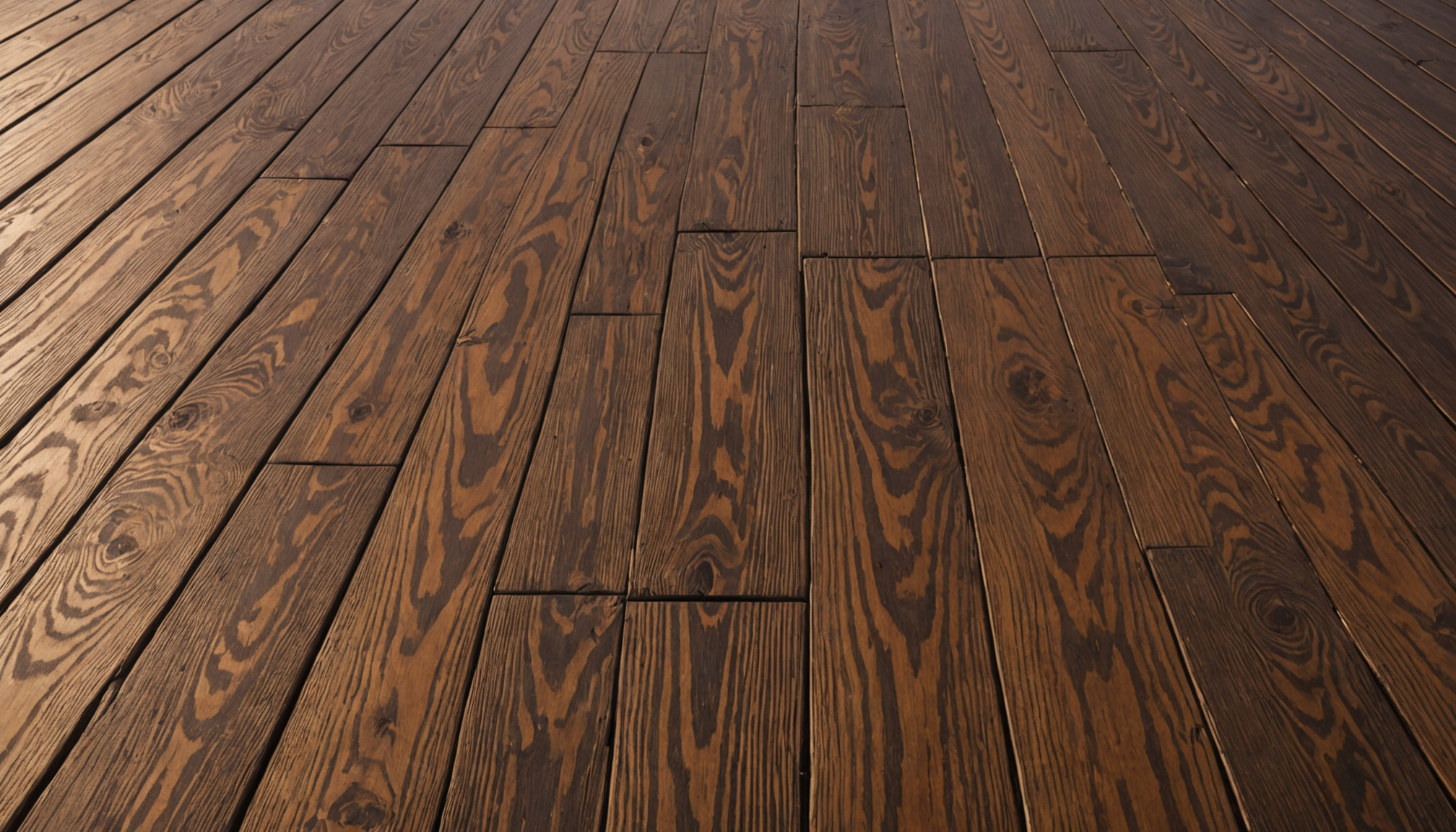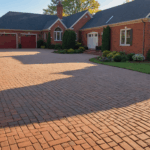Waterfront structures, whether they are docks, piers, marinas, or boardwalks, require materials that can withstand the harsh conditions typical of aquatic environments. Among these materials, wood has traditionally been a favored option due to its natural aesthetic, ease of sourcing, and relatively straightforward handling. However, not all types of wood are suitable for long-term exposure to water and its associated elements. Selecting the appropriate timber is crucial for ensuring durability, structural integrity, and longevity of the waterfront structure.
When considering wood for waterfront construction, durability and resistance to decay are primary factors. Certain hardwoods and softwoods have inherent properties that make them better suited for wet conditions compared to others. Here, we discuss some of the top wood choices, focusing on their attributes that contribute to prolonged service life along the water’s edge.
One of the most popular choices is Ipe, also known as Brazilian Walnut. Ipe is renowned for its remarkable durability, exceeding that of many other hardwoods due to its high density and natural oils, which confer significant resistance to water, decay, and insect infestation. Consequently, Ipe’s long life and minimal maintenance requirements make it a preferred choice for waterfront applications despite its higher cost and difficulty in machining.
Teak is another excellent option, prized for its natural oils that enhance its ability to repel water and resist decay. Teak’s stability and resistance to warping or cracking under varying weather conditions make it especially suitable for marine environments. Its attractive appearance further enhances its allure, making it a favorite for luxury waterfront developments.
Among softwoods, Western Red Cedar stands out due to its natural resistance to moisture, decay, and insect damage. It is lighter than most hardwoods and easier to work with, although it may not match the longevity of denser hardwoods like Ipe and Teak. Western Red Cedar offers a balance of durability and cost-effectiveness, making it suitable for projects with budget constraints.
Pressure-treated Pine is an affordable alternative commonly used in residential waterfront applications. The treatment process imbues the wood with enhanced resistance to the elements and biological threats. Although not as durable as the aforementioned hardwoods, it provides a good compromise between cost and performance, especially in less demanding or lower-budget projects.
| Wood Type | Durability | Natural Resistance | Cost | Maintenance |
| Ipe | High | Excellent | High | Low |
| Teak | High | Excellent | Very High | Low |
| Western Red Cedar | Moderate | Good | Moderate | Moderate |
| Pressure-treated Pine | Moderate | Moderate | Low | Moderate |
When selecting wood for waterfront structures, factors such as environmental exposure, structural requirements, aesthetic preferences, and budget constraints all play a vital role. By understanding the specific properties and trade-offs of each wood type, developers and builders can make informed decisions that enhance the functionality and longevity of their waterfront investments. While Ipe and Teak offer superior durability, the choice between these and other options like Western Red Cedar and pressure-treated Pine often depends on the unique demands of the project and cost considerations.
concrete options for longevity
When it comes to concrete, selecting the right composition is crucial to ensuring a long-lasting waterfront structure. Concrete is highly regarded for its durability and strength, making it an excellent choice for docks, seawalls, and piers. Here is a comprehensive guide to the various considerations and options available when choosing concrete for waterfront construction:
1. Understand the Advantages of Concrete:
– Durability: Concrete is inherently strong and resistant to harsh weather conditions, making it suitable for environments where exposure to water and fluctuating temperatures is common.
– Low Maintenance: Once set, concrete requires minimal maintenance compared to other materials, offering a cost-effective solution in the long run.
– Versatility: Concrete can be molded into various shapes and structures, providing flexibility in construction design.
2. Select the Appropriate Concrete Mix:
– High-Performance Concrete (HPC): Opt for HPC when enhanced durability and structural performance are priorities. HPC includes additives that improve longevity and resistance to harsh conditions.
– Reinforced Concrete: Utilize reinforced concrete which incorporates steel bars or fibers to enhance tensile strength and prevent cracking. This is pivotal for areas experiencing high-stress loads.
– Marine Concrete Mix: Consider a specially formulated marine concrete mix that contains anti-corrosive agents to withstand saltwater exposure and reduce deterioration.
3. Incorporate Protective Measures:
– Coatings and Sealers: Apply sealants or protective coatings to concrete surfaces to create an additional barrier against moisture penetration.
– Cathodic Protection: Install cathodic protection systems to prevent the electrochemical reactions that cause rebar corrosion, thereby preserving structural integrity.
4. Follow Best Practices in Placement and Curing:
– Proper Curing: Ensure that concrete is cured correctly, adhering to recommended humidity and temperature conditions to achieve maximum strength.
– Quality Control: Conduct regular quality checks during placement to avoid air pockets and ensure uniformity throughout the structure.
– Joint Placement: Properly place expansion joints to accommodate movement and prevent cracking due to thermal expansion and contraction.
5. Environmental Impact Considerations:
– Utilize environmentally friendly additives and recycled materials in the concrete mix to minimize the ecological footprint.
– Consider implementing eco-friendly practices during construction, such as waste reduction and energy-efficient curing methods.
By adhering to these guidelines, builders and developers can make informed decisions when choosing concrete for waterfront structures, ensuring robust and long-lasting solutions that withstand the rigors of aquatic environments. Considering all variables, from material composition to maintenance strategies, is paramount to maximizing the lifespan and efficacy of concrete structures fronting water bodies.
steel and metal advantages
Steel and metal components are often celebrated for their remarkable advantages when integrated into waterfront structures, offering a range of benefits that cater to both functional and aesthetic needs. These materials stand out due to their intrinsic strength, adaptability, and durability, making them an excellent choice for applications such as docks, piers, and seawalls.
Strength and Durability: Steel and metal alloys are renowned for their exceptional tensile strength, which allows them to withstand significant stress and heavy loads. This property is crucial for waterfront structures that must endure the forces of flowing water, waves, and potentially harsh weather conditions. Moreover, their resistance to mechanical wear and deformation prolongs the lifespan of these structures, ensuring they maintain their integrity over time.
Corrosion Resistance: One of the primary challenges in marine environments is metal corrosion. Fortunately, many steel types used in waterfront applications, such as stainless steel and galvanized steel, are imbued with anti-corrosive properties. These properties are essential for preventing rust and deterioration caused by saltwater and humidity, ensuring that metal structures remain safe and functional for extended periods.
Low Maintenance: Due to their robust construction and superior material properties, steel and metal structures typically require minimal maintenance. This translates into significant cost savings over time, as less frequent repairs and upkeep are necessary compared to other materials. The long-term performance of metal structures makes them a cost-effective choice in terms of both initial investment and lifecycle maintenance.
Sustainability and Recyclability: Steel and metals are inherently recyclable, which aligns with environmentally conscious construction practices. They can be repurposed multiple times without degradation in quality, making them a sustainable option for builders aiming to reduce their environmental footprint. This recyclability, coupled with the possibility of using recycled content during manufacturing, underscores their suitability in eco-friendly designs.
Versatility and Modularity: The adaptability of steel and metal allows for a wide range of design possibilities. They can be fabricated into intricate shapes and modular designs, facilitating innovative architectural solutions that meet both functional requirements and aesthetic aspirations. This versatility caters to the customization of waterfront structures, ensuring they harmonize with their surroundings while delivering robust performance.
Rapid Construction: The prefabrication capabilities of steel and metal components enable quick and efficient assembly. Prefabrication reduces on-site labor requirements and speeds up construction timelines, which is invaluable for projects with tight deadlines or those needing to minimize environmental disturbances during building phases.
By capitalizing on these comprehensive benefits, steel and metal materials prove to be an invaluable asset in constructing resilient and enduring waterfront structures. Their ability to seamlessly blend strength, sustainability, and design flexibility positions them as a top choice for developers and builders looking to craft superior structures that withstand the test of time and environment.
innovative synthetic materials
In recent years, innovative synthetic materials have become a game-changer in the construction of waterfront structures, presenting new possibilities for durability, efficiency, and design flexibility. These materials, engineered to enhance performance in harsh environments, offer unique advantages that traditional materials may not provide, blending cutting-edge technology with practical utility.
One of the most significant breakthroughs comes from the development of composite materials. These are typically made by combining two or more materials, such as glass or carbon fibers with a polymer resin, to create a product that maximizes the strengths of its components. Composite materials are remarkable for their strength-to-weight ratio, offering substantial load-bearing capacity while remaining lightweight. This attribute is especially beneficial for structures that need to minimize load stress on foundations, such as floating docks.
Beyond structural benefits, composites stand out for their corrosion resistance. In marine and freshwater environments where salt water, moisture, and other corrosive elements are prevalent, the inert nature of many composite materials ensures they remain unaffected over time, performing well where metals might degrade. This resistance further translates to savings in maintenance and repair costs, as structures built with composites do not require frequent anti-corrosion treatments.
The versatility of synthetic materials extends to polymeric solutions, such as high-density polyethylene (HDPE) and polyvinyl chloride (PVC). These plastics are excellent for specific applications like decking and pilings. HDPE, for instance, is highly resistant to both corrosion and marine organisms, while PVC can mimic the appearance of more traditional materials like wood, offering aesthetic flexibility without compromising on durability.
An exciting frontier in synthetic materials is the integration of recycled content into the production process. This eco-friendly approach not only reduces waste but also positions these materials as a key component in sustainable construction practices. Using recycled plastics and synthetics helps lower the environmental impact associated with new material production, supporting the growing demand for environmentally responsible building solutions.
Advanced manufacturing techniques, such as 3D printing and automated production, have further enhanced the appeal of synthetic materials in waterfront applications. These technologies allow for precision and customization, enabling the creation of complex structures that precisely meet design specifications and project requirements.
Overall, the application of innovative synthetic materials in waterfront construction offers compelling benefits, from enhanced durability and environmental resistance to cost-effectiveness and reduced environmental impact. By embracing these materials, developers, and builders can unlock new levels of performance and design potential in the development of efficient, resilient, and sustainable waterfront structures.
environmental considerations
In recent years, the environmental considerations in the selection of materials for waterfront structures have become increasingly important. As developers and builders strive to create structures that not only meet functional and aesthetic needs but also align with sustainability goals, understanding the environmental impact of material choices is crucial. Using materials that are sourced responsibly and have a minimal ecological footprint is key to reducing the overall impact on the surrounding environment.
The consideration of the carbon footprint is vital when selecting building materials. Some materials, like steel and concrete, traditionally have a high carbon footprint due to energy-intensive manufacturing processes. However, advancements in production technologies and the use of recycled content have helped to mitigate these effects. Builders can now opt for steel produced with electric arc furnaces that utilize scrap metal, significantly reducing energy consumption and emissions. Similarly, concrete manufacturers have begun incorporating industrial by-products, such as fly ash and slag, to lessen the reliance on Portland cement, which is a major source of CO2 emissions.
Sourcing materials locally whenever possible is another critical aspect of minimizing environmental impacts. Local sourcing reduces the transportation-related emissions and energy expenditures associated with long-distance shipping. It also supports local economies and ensures that the materials are suited to the environmental conditions of the site.
Moreover, the implementation of sustainable practices in the construction process further aids in reducing environmental impact. Utilizing energy-efficient machinery, reducing waste through precise material cutting and planning, and recycling leftover materials contribute to a greener building approach.
The use of innovative synthetic materials offers additional environmental benefits. These materials often incorporate recycled content, reducing dependency on virgin resources and cutting down on waste. Furthermore, synthetic materials can be engineered for longevity and reduced maintenance, diminishing the frequency of replacements and repairs that can contribute to resource depletion and further emissions.
Lastly, the design phase of waterfront structures can incorporate features that promote environmental harmony, such as habitats for aquatic life, rainwater management systems, and erosion control features that preserve the natural landscape.
By prioritizing environmental considerations in material selection and construction practices, developers and builders can ensure that waterfront structures are not only resilient and functional but also contribute positively to the health of the aquatic environment and the planet overall. Such practices are essential for the sustainable development of our waterfronts, fostering a balance between human use and the preservation of nature’s delicate ecosystems.
In conclusion, the selection of materials for waterfront structures involves a careful balance between longevity, aesthetic preferences, budget considerations, and environmental impact. By considering the strengths and limitations of each material type—ranging from durable woods to high-performance concrete, resilient steel, and innovative synthetics—builders and developers can make well-informed, sustainable choices. These decisions not only ensure the structural integrity and durability of the constructions but also reflect a commitment to minimizing environmental impact. As advancements in materials technology continue to evolve, the potential for constructing environmentally friendly, robust, and aesthetically pleasing waterfront structures grows, paving the way for more sustainable interactions with our precious natural waterways.


